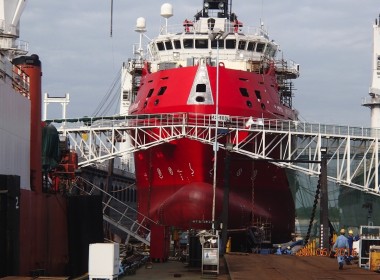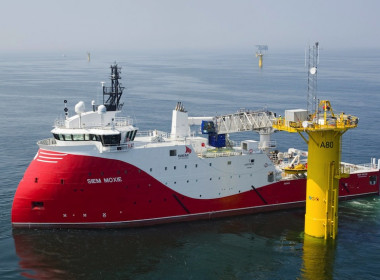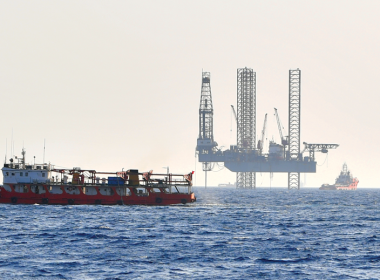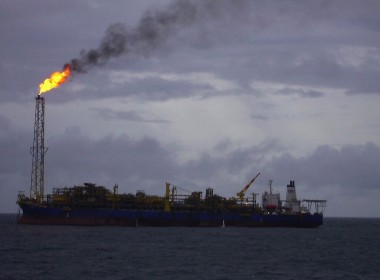COLUMN | Safety culture matters: Pemex and Perenco on the wrong side of history [Offshore Accounts]

Offshore is one of the industries with the biggest risk profiles in the world. When bad things happen in offshore, people die, often there are explosions and sinkings, fires and oil spills, and the environment can be badly polluted, killing seabirds, fish, dolphins and coral, and inflicting billions of dollars of losses on nearby industries such as tourism and fishing.
Three weeks ago, we looked at an explosion on a production platform off Gabon operated by the privately-owned European oil company Perenco. The incident claimed the lives of six workers on March 20.
We await a definitive report from Perenco, which I hope that the company will make public so that the failures that led to these deaths can be learnt from. However, video evidence has already been widely circulated of the explosion and its aftermath.
It appears that there was a blow-out during work-over operations, sending a cloud of oil and gas over the facility. The automatic shut-off failed and then manual efforts to stem the flow of hydrocarbons from the well failed before the volatile hydrocarbon mixture ignited in a fatal fireball.
The video of the frantic efforts to contain the situation before the accident occurred has been extensively viewed. Nowadays, when faced with a life-threatening situation, the natural human reaction seems to be to stop and film from a smart phone.
Tanker owners took thirty years to improve
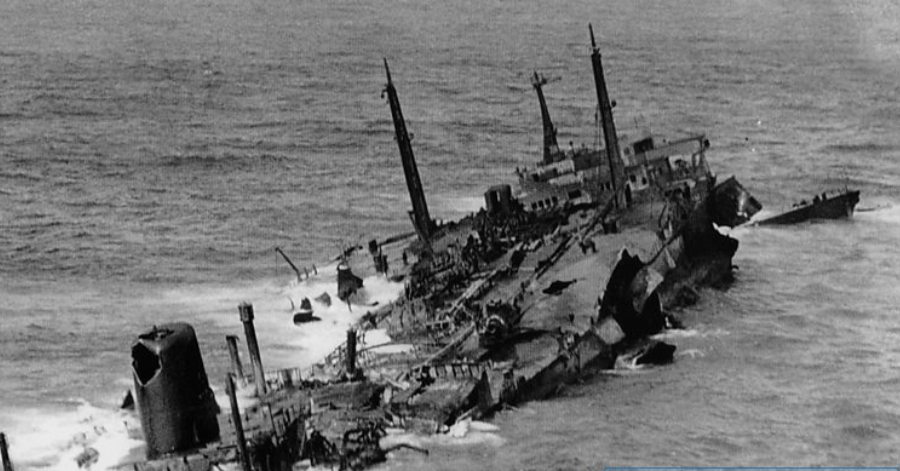
The history of the offshore industry, like that of the tanker business, can be written through the series of catastrophes that claimed the lives of many hard-working offshore crew. Unfortunately, the safety situation with tankers became so public and so bad in the forty years up to the sinking of the structurally unsound Prestige off Galicia in Spain in 2002 that the entire tanker industry remains a by-word for pollution in the popular imagination.
The endless run of disasters included such notorious casualties as Amoco Cadiz, Torrey Canyon, and Atlantic Empress and lesser-known ones such as Betelgeuse, which exploded in Bantry Bay in Ireland in 1979, claiming the lives of 49 crew and terminal workers, the wife of a crewmember, and, subsequently, a Dutch salvage diver.
It often seems that the marine and offshore industries only improve when the cost of a major disaster forces companies and regulators to say, “Never again,” and to implement more stringent industry-wide standards to compel compliance. Double hulls were made mandatory for tankers only because of the massive oil spill when Exxon Valdez ran aground in Prince William Sound in Alaska in March 1989.
The fire and explosion on the Piper Alpha platform in July 1988 in the UK sector of the North Sea killed 167 people. This horrible inferno on a production facility led to the mandatory adoption of safety standby and emergency rescue response vessels and of significant improvements in permitting and maintenance procedures.
The sinking of the 180-tonne bollard pull anchor handler Bourbon Dolphin with the loss of eight lives in 2007 forced naval architects to adopt higher standards of stability for offshore vessels.
Fail again, fail better
It often seems that the offshore industry and the maritime sector more widely only improve in line with the Samuel Beckett quote that was immortalised as a tattoo on the forearm of tennis legend Stanislas Wawrinka: “Ever tried. Ever failed. No matter. Try again. Fail again. Fail better.”
Unfortunately, failures in offshore tend to be more catastrophic than Wawrinka double faulting his serve. Fail again. Fail safer, would be a better outcome for Perenco and the wider offshore industry.
Deepwater Horizon is a powerful warning
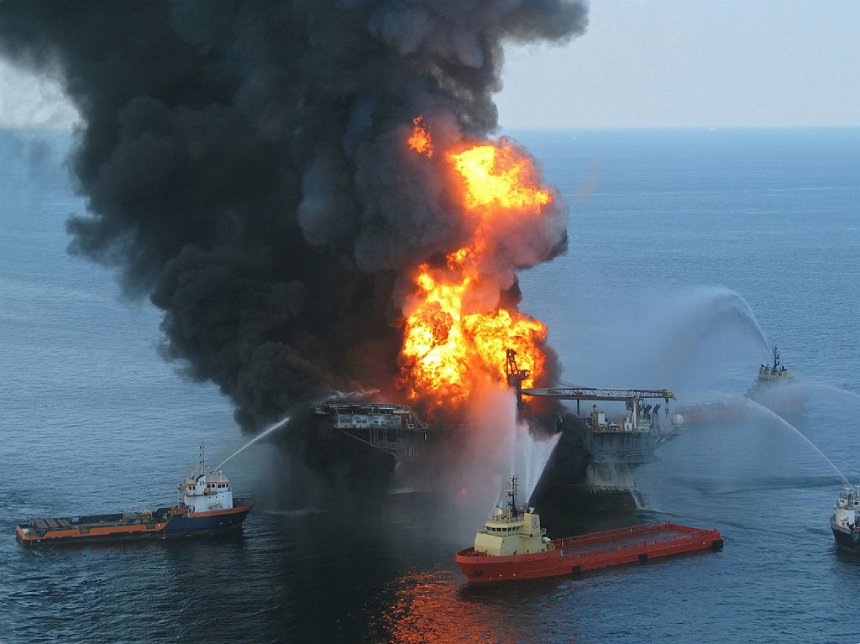
It is easy to forget the consequences in 2010 when Transocean’s semi-sub Deepwater Horizon suffered a blow-out when drilling the Macondo well for BP in the Gulf of Mexico in around 1,500 metres of water. The explosion killed 11 crewmembers, the rest evacuated, and a terrible fire raged. The fire eventually sank the rig two days later, leaving oil pouring from the well the rig had been drilling.
The oil gushing out of the ruptured well on the seabed created the largest marine oil spill in history, with 4.9 million barrels (780,000 cubic metres) being lost over nearly four months before the well was finally killed. As well as the largest oil spill, it was also the largest corporate liability from a single incident in human history.
BP had to pay over US$20 billion in fines, and the total cleanup costs, charges, and penalties cost the company more than US$65 billion altogether. People say safety costs money, but Deepwater Horizon, like the Baltimore Bridge collapse, is a reminder that accidents cost a lot more than looking at the biggest risks that could happen and putting strong mitigating measures in place to prevent them from happening.
Using the correct mud to control the well, checking that the rig’s blow-out preventers worked properly, and suspending operations until they did might have cost BP a few million dollars. This also would have prevented an accident that cost the company US$65 billion, and set it far behind ExxonMobil and ChevronTexaco.
Safety is not expensive; accidents are
When people tell you safety is expensive, Deepwater Horizon is a reminder of the unfathomably high cost of the worst-case scenario so far experienced in offshore. That accident happened in the United States, one of the most litigious countries in the world.
As we will see, the companies operating in developing countries with weaker enforcement and a lower economic value on human life and lower costs relating to pollution, have less incentive to invest in preventing fatal accidents. This is unfortunate as it encourages risk taking and increases fatalities.
BP’s poor track record before Macondo
One of the red flags before the Gulf of Mexico catastrophe in 2010 was the number of earlier incidents BP had experienced.
In 2005, an explosion at BP’s Texas City refinery killed 15 people. The next year, BP suffered the spill of more than 5,000 barrels of crude oil from the company’s pipelines on the North Slope of Alaska due to poor maintenance.
These were red flags because fundamentally, safety is either part of company culture, or it is not.
You can see this at Boeing today where a fundamental failure with the 737MAX programme lies with a failure to take safety seriously. As a result, two planes crashed, over 300 died, and now further problems are coming to light after a panel was ripped off in flight because it was not properly secured.
BP pre-Deepwater Horizon and Boeing today show that if safety is not part of company culture, you can expect accidents to keep recurring.
Perenco’s poor track record before the March 20 explosion
We believe Perenco suffers a similar lack of a safety culture. In our original piece on March 25, we highlighted a series of incidents and accidents that had preceded the Gabon explosion. There were fires on the Emeraude Platform in Congo-Brazzaville, pollution in Gabon and the Democratic Republic of Congo, and other fatalities in the UK and Cameroon.
Because Perenco is privately-owned by the billionaire Perrodo family, there is no obligation even to report its accidents and incidents publicly. Perenco’s website is strong on platitudes like, “We work to the highest global standards across all our operational sites,” but bereft of any meaningful safety or detailed environmental reporting.
The company admits in its “Sustainability Report 2022” (the most recent available) that between 2018 and 2022, it suffered five fatalities across its operations, but it gives no details of what happened or where, how many lost time incidents occurred, and what high potential incidents were identified.
Readers are concerned
When we appealed for insight into Perenco’s safety culture, we received responses from four readers, which included those who had worked for the company as employees, and those who knew of the company as a customers or contractors.
This level of response in itself reveals that there is concern across the industry about Perenco’s safety record. Nobody wrote in to defend Perenco.
However, some were reluctant to talk to us, afraid of being sued because they had signed non-disclosure agreements, or concerned that their anonymity would not be protected by us, exposing them to retribution from the company, or suspicion and discrimination from other oil and gas companies. These are understandable fears, as the offshore industry is a small world and the concern that “snitches get stitches” or at least blackballed from future jobs, seems prevalent. We have observed before that being a whistleblower is a vital but thankless task.
What was revealed was frankly disturbing.
UK reporting database reveals 10 improvement notices, enforcement action and an oil spill
We quickly found that in addition to the gas leaks on Davy 49/30A platform, the awful death of Tyron Jones after being crushed on a platform in Indefatigable Field, and the oil spill in Poole Harbour in 2023 (which the company claims was caused by the “accelerated corrosion” of a pipeline), Perenco UK also suffered an oil spill on the Inde AT Platform in the North Sea in February this year Ten improvement notices in the period 2020 to 2023 were served by the UK safety regulator.
The oil spill in February was apparently due to the failure of a diesel tank on the platform caused by a lack of maintenance. The spill was so severe that Perenco had to call out an oil spill response contractor to assist with the cleanup, our source claimed.
The database of offshore safety violations reveals a lengthy list of findings against Perenco, reflective of the robust reporting and inspection regime in the UK. We should perhaps be more concerned with Perenco’s African operations, where facilities are classed by a non-IACS classification society and where there is no effective national health and safety enforcement.
The Offshore Petroleum Regulator for Environment and Decommissioning (OPRED) in the UK served an enforcement notice on Perenco for deficiencies on the Leman 27BC jacket in January of this year.
OPRED wrote that the facility, “has been operating since installation without any local or computerised level transmitters or alarms, including executive action, on its diesel bulk storage tanks. The operator has failed to install the required equipment, as committed to by the company in response to OPRED inspection letters in both 2022 and 2023, and therefore has failed to implement suitable precautions to mitigate the risk of release from the bulk diesel storage system on Leman 27B.”
There was also the alarming finding of a prohibition notice in 2022: “You have not ensured that the risk of exposure to dangerous and hazardous substances by persons carrying out repairs to natural gas condensate pipework has been eliminated or reduced so far as is reasonably practicable.”
Additionally in 2023, the HSE regulator wrote to the company about 49/23A platform that there have been “hydrocarbon releases at this installation on January 29, 2023, March 20, 2023 and April 8, 2023, which evidence suggests has common underlying causes relating to the adequacy of your existing arrangements and/or adherence to those arrangements such as in relation to isolation, breaking of containment and control of work.” This leaks occurred during the decommissioning of the forty-year old platform, we understand.
We could try to dig deeper by making freedom of information requests to the UK government through the formal FOI process, but this would take time. What is clear is that Perenco needs to invest more in preventative maintenance across its facilities in the UK and that it needs to change its attitude. Events in Gabon suggest similar problems elsewhere.
One correspondent felt that no other oil company exhibited “such a disregard for the rules” as Perenco.
Gabon has had problems before the fatal explosion
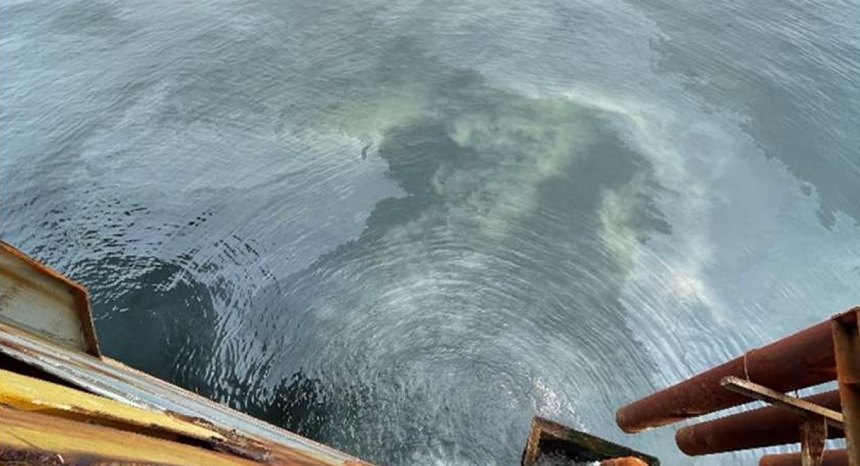
We received similar concerns about even more serious breaches of the rules from Perenco facilities in Gabon from another correspondent. They claimed that during acidising operations, hydrogen chloride vapour was routinely entering the accommodation of the facility, endangering the health of the crew, that the oily water separator on their facility was out of service for long periods and was bypassed, and that pollution incidents occurred on a daily basis from that facility.
They claimed that hydrocarbons, oil-based mud (OBM), and cuttings contaminated with OBM and acid were routinely discharged overboard. They provided photographic evidence of the pollution from the Perenco facility entering the sea. Based on our knowledge of Perenco’s operations in country, the photographs appeared genuine.
This was not the facility where the six fatalities occurred, but the description of the lack of maintenance and the failure to follow safety procedures appear to suggest systemic failings of the Perenco management system. We believe that Perenco’s audit of its Gabon operations needs to extend far wider than just the single fatal blow-out in March and should probably also extend to its facilities in the two Congos and Cameroon.
To give further examples, our correspondent claimed that on the facility on which they worked, the gas detectors had not been calibrated for more than two years and many were not operational, posing a serious hazard for enclosed space entry.
Additionally, they noted that the lifeboats on the facility had a far lower capacity than the total personnel onboard approved by the non-IACS classification society. We were not able to verify this claim, but it seems consistent with other reports we have received earlier about non-IACS standards.
The lessons from Pemex
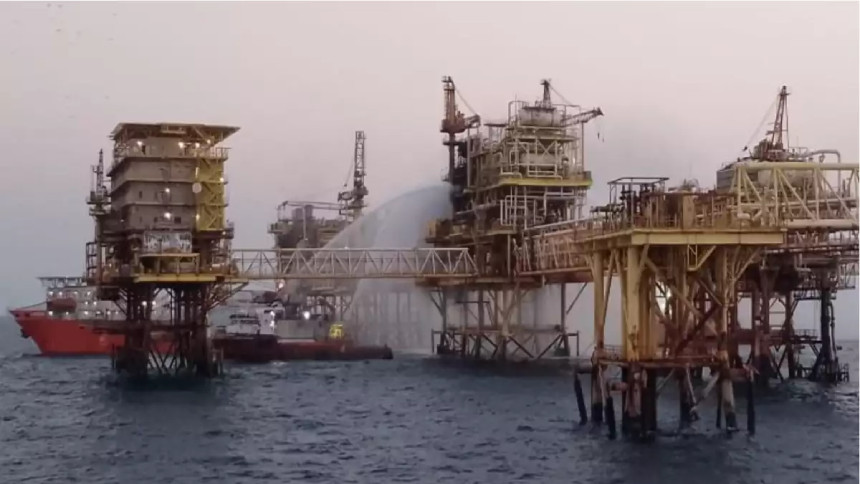
Mexican state-owned oil company Pemex is the ultimate example of what happens when a company lacks a safety culture, ignores procedures, and fails to perform maintenance. On April 6 this year, one of its platforms, Akal-B in Cantarell Field in the Bay of Campeche, was engulfed in flames and one worker was killed and another nine injured. This is just the latest in a shameful series of fatal accidents involving Pemex facilities.
Writing in Energy Voice last week, Jeremy Cresswell put together an awful list of the Mexican company’s serious fatal accidents across five decades. Pemex is a toxic and dangerous company that has killed literally hundreds of people in multiple incidents across different operational locations. It is clear from the recent fatality and fire that Pemex still has no safety culture and that the accidents will simply continue to happen until the company fixes its management and its procedures and invests in its facilities.
Before Macondo, there was Ixtoc-1
Mr Cresswell highlighted that Pemex suffered the worst oil spill before Deepwater Horizon when, in June 1979, the semi-sub Sedco 135 drilling the Ixtoc 1exploration well suffered a blow-out in 50 metres of water.
As with the BP disaster, the blow-out preventers failed. This led to the rig catching fire and sinking, and more than three million barrels of oil flowing from the seabed into the Gulf of Mexico for ten months until the well was killed.
His summary and others conclude by noting that Pemex “spent US$100 million to clean up the spill and avoided most compensation claims arising by asserting sovereign immunity as a state-run company.”
Death and destruction on a regular basis
A Pemex LNG plant blew up in 1984, killing over 500 people, and the UK government HSE Executive has a summary of that unnecessary tragedy here. There are pipeline spills, fires on rigs and platform, fatal blazes in refineries and chemical plants, and even an explosion at the Pemex headquarters in 2013, which killed 37 people when machinery blew up in the basement.
The Energy Voice list is a depressing list of failures to learn and embed safety over nearly fifty years. Probably many readers remember the time in 2021 when one of Pemex’s pipelines ruptured and the sea was literally on-fire.
Six weeks later, another Pemex platform exploded and five workers were killed there.
Risky business is riskier for Pemex
Discussing those deaths, Pemex’s CEO, Octavio Romero, told reporters at a press conference that “there is not a problem of lack of resources. The oil industry is a risky industry. We have had accidents, which in numbers are less than in previous years.”
Arguably, this is even more damning. The company has the resources to prevent accidents, but its culture prevents it from doing so.
No other company, of which we know (thankfully), has the same appalling safety record as Pemex, despite operating in the same “risky” industry. Clearly, there are systemic failings in Pemex’s ability to manage its operations safely.
Pemex’s example is a dangerous example to Perenco of what happens when a company has a rotten culture of risk-taking and inadequate maintenance.
No one wants Perenco to go down that road, and now is the time for change and for systematic improvements in how Perenco works.
Conclusion: Perrodo family need to instigate change

One of the advantages of privately-owned businesses is that they can invest for the long term without short-term shareholder pressure and the treadmill of quarterly earnings reports and analyst briefings.
One of the weaknesses for the family owners, however, is that their name is irrevocably tied to the performance of the company. When it succeeds and performs well, they are held up as paragons of success, praised for their vision and lauded as business geniuses who deserve their luxury chateaus, their Bordeaux vineyards, and their jet-set lifestyle.
On the other hand, when a business fails or behaves unethically, the buck also stops with the family. In pharmaceuticals, the billionaire Sackler family was implicated in the death of hundreds of thousands of Americans in the ongoing opiate overdose scandal through their notorious family-owned company Purdue Pharma, which produced and aggressively marketed Oxycontin, a powerful but highly addictive opioid. The Sackler family’s reputation has been forever blemished by the appalling and immoral behaviour of the company it owned.
Unless the Perrodos fix Perenco, they face the same fate – still rich, but tainted by the fatal accidents and dreadful safety record of the company. Their family name could become a synonym for the oil and gas industry at its worst, and the pursuit of profit above the lives of their staff.
We would strongly advise François Perrodo, the chairman of Perenco, to set aside his sports car racing and collection of Maclaren supercars and focus on making Perenco a safe place to work.
Reminder: What we ask of Perenco
We closed our last piece with an appeal to Perenco’s newly appointed CEO Armel Simondin. We reiterate that we would urge M. Simondin to take the following measures:
- Commission and publish publicly a thorough and transparent report into the Gabonese deaths so that Perenco’s other operations and the oil and gas industry as a whole can learn from this unnecessary tragedy and prevent similar accidents.
- Investigate whether cost-cutting, insufficient safety standards, and adopting in-house practices, which are contrary to industry best practice, contributed to the fire and the incident.
- Ensure that the families of the deceased personnel are properly compensated.
- Publish a full list of Perenco’s incidents and accidents in the last decade that involved fatalities or serious injuries or spills, and explain what measures have been taken to prevent recurrence.
- Open up the company’s facilities and critical operations in Africa to audit by an IACS class society like DNV, ABS, or BV. Something seems wrong to our eye, and current classification arrangements and company procedures do not seem to be delivering safe, incident-free operations.
Perenco produces over 510,000 barrels of gross production of oil and gas per day. It has the resources to make its sites safe for its staff, and its management should be held accountable for its shameful safety record.
A company owned by a family worth US$10 billion cannot plead a shortage of resources for safety. Now is the time for change in Perenco.
Further reading
In 2019, Offshore Technology magazine published this excellent article on “The world’s worst offshore oil rig disasters.” We disagree with their opening comment that “the most lethal element in offshore life often comes from harsh weather conditions and the daily threat of an unforgiving ocean.” Most accidents are caused not because of bad weather, but because of bad procedures, no procedures, or of not following procedures. Bad weather is a constant offshore, disasters happen because of bad management, poor planning and botched execution.
National Geographic’s analysis captures how post-Prestige the volume of oil spilled globally from tankers has declined sharply, at least until the loss of Sanchi in 2018 off Shanghai. Now the Dark Fleet of Russian, Iranian, and Venezuelan tankers smuggling crude to evade sanctions threatens to undo all the work the industry has done to raise standards and restore its reputation.


